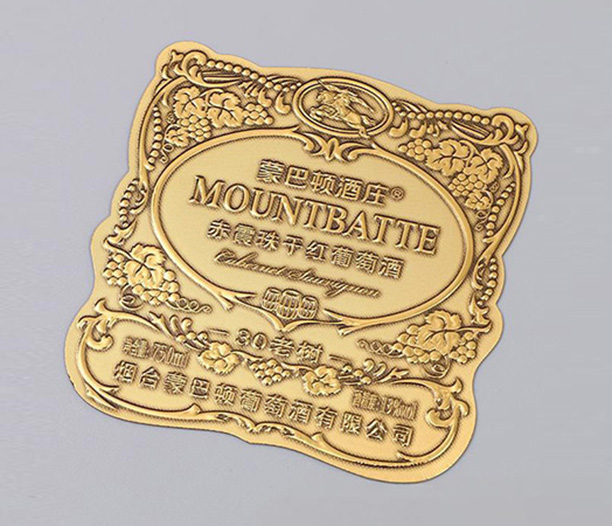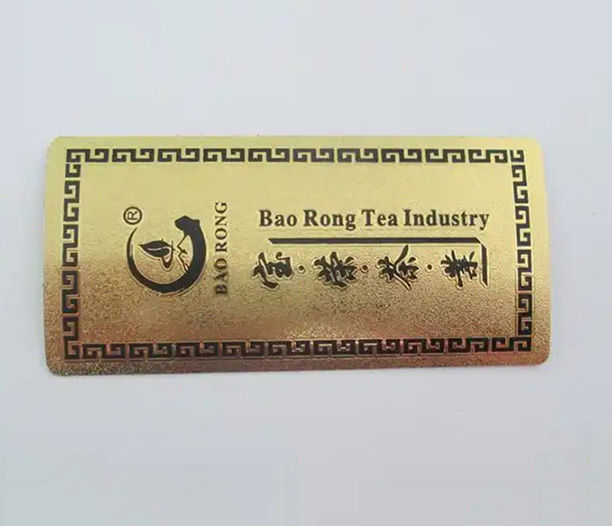When it comes to durable identification and customization, metal tags for engraving stand out as a versatile solution across industries. Whether you're in manufacturing, aerospace, or personal crafts, these tags offer longevity and clarity that other materials can't match. But with so many options available, how do you choose the right ones? In this article, we'll dive into the essential aspects of metal tags for engraving, covering materials, applications, costs, and more, to help you make an informed decision. By the end, you'll have a clear roadmap to selecting the perfect tags for your needs, ensuring they withstand the test of time and environment.

What Are Metal Tags for Engraving?
Metal tags for engraving are specially designed plates or labels made from various metals, intended for permanent marking through engraving processes. These tags serve as reliable identifiers, often used for asset tracking, serial numbers, branding, or safety warnings. Unlike printed labels, engraved metal tags resist fading, corrosion, and physical wear, making them ideal for harsh conditions. The engraving process involves etching text, logos, or codes into the metal surface, creating a lasting impression that remains legible for years. This durability is why industries like automotive, military, and healthcare rely heavily on metal tags for engraving to maintain accurate records and ensure safety compliance.
The versatility of metal tags for engraving lies in their adaptability to different environments. For instance, in outdoor settings, they can endure UV exposure and moisture without degrading. Indoors, they provide a professional finish for equipment or decorative items. As you explore options, you'll find that the key to maximizing their benefits starts with understanding the materials and techniques involved.
Common Materials Used in Metal Tags for Engraving
Selecting the right material is one of the most critical steps when working with metal tags for engraving. Each metal offers unique properties that affect durability, cost, and suitability for specific applications. Here's a breakdown of the most common materials:
Stainless Steel: Known for its corrosion resistance and strength, stainless steel is a top choice for metal tags for engraving in demanding environments like marine or chemical industries. It holds engravings sharply and can be finished in various ways, such as brushed or polished, to enhance aesthetics.
Aluminum: Lightweight and cost-effective, aluminum tags are popular for general-purpose use. They engrave cleanly and resist rust, making them suitable for indoor applications or lighter outdoor duties. Anodized aluminum options add an extra layer of protection against wear.
Brass: With its classic, gold-like appearance, brass is often used for decorative or high-end applications, such as plaques or jewelry tags. It engraves deeply and develops a patina over time, adding character while maintaining readability.
Bronze: Similar to brass but more durable, bronze is excellent for outdoor memorials or heavy-duty industrial tags. It withstands extreme weather and offers a timeless look that many find appealing.
Nickel Alloys: These include metals like monel or inconel, which are used in high-temperature or corrosive environments. While more expensive, they provide unmatched resilience for specialized metal tags for engraving.
When choosing a material, consider factors like exposure to elements, budget, and the desired lifespan. For example, if you need metal tags for engraving in a factory setting, stainless steel might be your best bet due to its toughness. On the other hand, for promotional items, aluminum could offer a balance of affordability and quality.
Applications of Metal Tags in Various Industries
Metal tags for engraving are indispensable across a wide range of sectors, thanks to their reliability and customization potential. Here are some key applications where these tags shine:
Industrial and Manufacturing: In factories, metal tags for engraving are used to label machinery, tools, and components with serial numbers, safety instructions, or maintenance schedules. This helps in asset management and reduces downtime by ensuring easy identification.
Aerospace and Defense: These industries require tags that can endure extreme conditions, from high altitudes to combat zones. Engraved metal tags provide permanent markings for parts, equipment, and vehicles, meeting strict regulatory standards.
Medical and Healthcare: Hospitals and labs use metal tags for engraving on surgical instruments, devices, and patient records to ensure sterility and traceability. The non-porous surfaces of metals like stainless steel prevent bacterial growth, which is crucial in sterile environments.
Retail and Personalization: From custom keychains to branded merchandise, metal tags for engraving add a personal touch. Jewelers often use them for pendants or bracelets, while retailers employ them for price tags or loyalty program items.
Outdoor and Infrastructure: In construction or utilities, these tags mark pipes, electrical panels, and boundary lines. Their resistance to weathering makes them ideal for long-term outdoor use without deterioration.
By understanding these applications, you can better align your choice of metal tags for engraving with your specific needs. For instance, if you're in healthcare, prioritize materials that are easy to sterilize, whereas in retail, focus on aesthetics and cost-efficiency.
How to Choose the Right Metal Tags for Your Needs
Choosing the perfect metal tags for engraving involves more than just picking a material. It's about evaluating your project's requirements to ensure the tags perform as expected. Here are five crucial factors to guide your selection:
Assess the Environment: Where will the tags be used? If they'll face moisture, chemicals, or temperature swings, opt for corrosion-resistant metals like stainless steel or nickel alloys. For indoor, low-impact uses, aluminum might suffice. This step ensures your metal tags for engraving last without frequent replacements.
Determine the Engraving Method: Different metals respond better to specific engraving techniques. Laser engraving works well on stainless steel and aluminum for precise marks, while mechanical engraving suits brass and bronze for deeper cuts. Consider the complexity of your design—intricate logos may require laser-based approaches for metal tags for engraving.
Size and Thickness Considerations: The tag's dimensions affect both usability and durability. Thicker tags are more robust but might be overkill for light-duty applications. Measure the space where the tag will be placed to avoid overcrowding, and ensure the thickness aligns with the engraving depth needed for clarity.
Finish and Aesthetics: Metal tags for engraving can come in various finishes, such as matte, glossy, or colored coatings. Think about visibility—a polished finish might reflect light and reduce readability, while a matte finish offers better contrast. If branding is key, match the finish to your company's image.
Budget and Quantity: Costs can vary widely based on material and customization. Bulk orders often reduce per-unit prices, so plan your needs in advance. Remember, investing in higher-quality metal tags for engraving upfront can save money long-term by minimizing replacements.
By weighing these factors, you'll narrow down options efficiently. For example, a small business owner might prioritize cost and choose aluminum tags for basic inventory labeling, while a large corporation could invest in stainless steel for global asset tracking.

Cost Considerations for Metal Tags
When budgeting for metal tags for engraving, it's essential to understand what drives the price. Costs aren't just about the metal itself—they include engraving complexity, order volume, and additional services. On average, basic aluminum tags might start at a few dollars per piece, while specialized nickel alloy tags could cost significantly more. Factors like custom shapes, intricate designs, or protective coatings add to the expense. For bulk purchases, many suppliers offer discounts, so if you're planning a large-scale project, it's wise to request quotes early. Also, consider long-term value: durable metal tags for engraving may have a higher initial cost but reduce maintenance and replacement expenses over time. To stay within budget, prioritize must-have features and compare multiple suppliers for competitive pricing.
Engraving Techniques for Metal Tags
The engraving method you choose impacts the durability and appearance of metal tags for engraving. Common techniques include:
Laser Engraving: This uses a high-powered laser to etch designs onto the metal surface. It's precise and ideal for complex graphics or small text, making it a popular choice for stainless steel and aluminum tags. The process is fast and produces clean lines without physical contact, reducing wear on the tag.
Mechanical Engraving: Also known as rotary engraving, this involves a cutting tool that physically removes metal to create grooves. It's better for deeper marks on materials like brass or bronze, ensuring the engraving withstands abrasion. However, it can be slower and more suited to simpler designs.
Chemical Etching: This technique uses acids to burn patterns into the metal. It's cost-effective for large batches and works well on a variety of metals, but it might not be as durable as laser or mechanical methods for outdoor metal tags for engraving.
Dot Peening: Common in industrial settings, this method uses a stylus to punch dots into the metal, forming characters or codes. It's highly durable and often used for serial numbers on heavy machinery.
Selecting the right technique depends on your material and usage. For instance, if you need metal tags for engraving with high detail, laser engraving is your best bet, whereas dot peening excels in high-wear environments.
Finding Reliable Suppliers for Metal Tags
Sourcing quality metal tags for engraving requires careful vendor selection. Look for suppliers with proven experience in your industry, and check reviews or case studies to gauge reliability. A good supplier should offer customization options, such as material choices, sizes, and engraving methods, and provide samples to test quality. Additionally, consider their turnaround times and customer support—responsive communication can prevent delays in critical projects. When evaluating quotes, don't just go for the cheapest option; assess the overall value, including warranties or after-sales service. Building a relationship with a trusted supplier ensures consistent quality for your metal tags for engraving, whether you're ordering small batches or large volumes.
Frequently Asked Questions (FAQ)
Q1: What are the most durable materials for metal tags for engraving in outdoor environments?
A1: Stainless steel and bronze are among the most durable materials for outdoor metal tags for engraving due to their high corrosion resistance and ability to withstand weather elements like rain, UV rays, and temperature fluctuations. These metals ensure the engravings remain legible for years, making them ideal for applications in construction, marine, or infrastructure.
Q2: Can metal tags for engraving be customized with colors or logos?
A2: Yes, metal tags for engraving can be customized with colors, logos, and various finishes through processes like anodizing, painting, or powder coating. However, it's important to choose a finish that doesn't interfere with the engraving clarity—for instance, laser engraving often works best on uncoated or lightly coated surfaces to maintain sharpness.
Q3: How do I maintain and clean engraved metal tags to ensure longevity?
A3: To maintain metal tags for engraving, regularly wipe them with a soft cloth and mild soapy water to remove dirt and debris. Avoid abrasive cleaners that could scratch the surface or fade the engraving. For tags in harsh environments, occasional inspections for corrosion or damage can help address issues early, prolonging their life.
Q4: What is the typical turnaround time for ordering custom metal tags for engraving?
A4: Turnaround times vary based on complexity and order size, but standard custom metal tags for engraving often take 1-3 weeks from order to delivery. Rush services may be available for an additional fee, so discuss timelines with your supplier during the quoting process to align with your project schedule.
Q5: Are there any environmental concerns with using metal tags for engraving?
A5: Metal tags for engraving are generally environmentally friendly, as metals like aluminum and steel are recyclable. However, some engraving processes, such as chemical etching, may involve hazardous materials, so it's best to work with suppliers who follow eco-friendly practices and dispose of waste responsibly to minimize environmental impact.
In conclusion, metal tags for engraving offer a robust solution for a multitude of needs, from industrial tracking to personal keepsakes. By focusing on materials, applications, costs, and techniques, you can select tags that deliver lasting performance. Remember, the right choice not only enhances functionality but also adds value to your projects. If you're ready to explore options, start by consulting with a reputable supplier to bring your vision to life.






